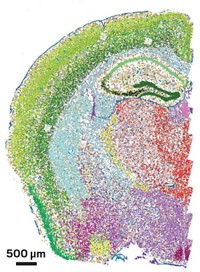Advertisement
Grab your lab coat. Let's get started
Welcome!
Welcome!
Create an account below to get 6 C&EN articles per month, receive newsletters and more - all free.
It seems this is your first time logging in online. Please enter the following information to continue.
As an ACS member you automatically get access to this site. All we need is few more details to create your reading experience.
Not you? Sign in with a different account.
Not you? Sign in with a different account.
ERROR 1
ERROR 1
ERROR 2
ERROR 2
ERROR 2
ERROR 2
ERROR 2
Password and Confirm password must match.
If you have an ACS member number, please enter it here so we can link this account to your membership. (optional)
ERROR 2
ACS values your privacy. By submitting your information, you are gaining access to C&EN and subscribing to our weekly newsletter. We use the information you provide to make your reading experience better, and we will never sell your data to third party members.
Analytical Chemistry
ACS Meeting News: Method watches nucleosomes open and close
by Celia Arnaud
August 24, 2016

It takes a lot of packaging to squeeze DNA into the nucleus of a cell. The DNA in our chromosomes is packaged into nucleosomes, which consist of about 150 DNA base pairs wrapped around eight-protein spools called histones.
“The level of gene packaging in a human nucleus is extreme,” said Tae-Hee Lee, a chemistry professor at Pennsylvania State University. “Two meters of DNA is packaged into a 10-µm nucleus. That’s the equivalent of about 30 miles of string compacted in a basketball.”
Copying or reading the DNA requires getting through all that packaging. Researchers have hypothesized that a path to the DNA opens up during thermally activated spontaneous motions of the histones and DNA. In a session sponsored by the Division of Analytical Chemistry at the ACS national meeting in Philadelphia, Lee described work demonstrating that such motions really do happen. The work also was published earlier this month (J. Phys. Chem. B 2016, DOI:10.1021/acs.jpcb.6b06235).
Lee’s group immobilized nucleosomes on a microscope slide and monitored the complexes using a method based on fluorescence resonance energy transfer (FRET).
Through a combination of two techniques, the team analyzed the FRET signals to quantify the motions of the histone proteins in the nucleosomes. They found that a protein dimer dissociates from the histone core every three milliseconds and moves back into place within two milliseconds. Modifications of the histone, including acetylation at a particular amino acid, affect these dynamics without significantly altering the histone structure.
“It is quite exciting to see these more extensive single-molecule studies on nucleosome dynamics,” said Peter G. Wolynes, a chemistry professor at Rice University, who uses computational methods to study nucleosomes. “The system is central to understanding gene regulation, and its large number of components have made ensemble studies complex. The single-molecule approach allows much greater clarity.”
Vasily M. Studitsky, an expert on epigenetics and gene regulation at Fox Chase Cancer Center in Philadelphia, told C&EN: “Although the majority of past studies in the field of epigenetics were focused on nucleosome structure, it seems very likely that future analysis of chromatin dynamics will help to reveal new fascinating mechanisms that simply cannot be detected by current, mostly structure-oriented, technologies.”
RELATED: Putting DNA in a Bind




Join the conversation
Contact the reporter
Submit a Letter to the Editor for publication
Engage with us on Twitter